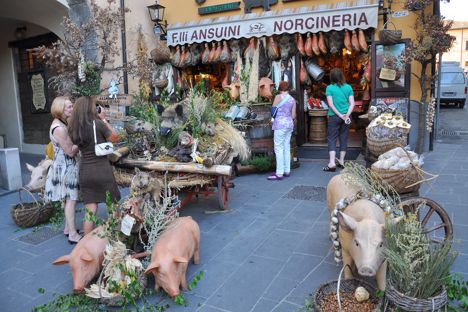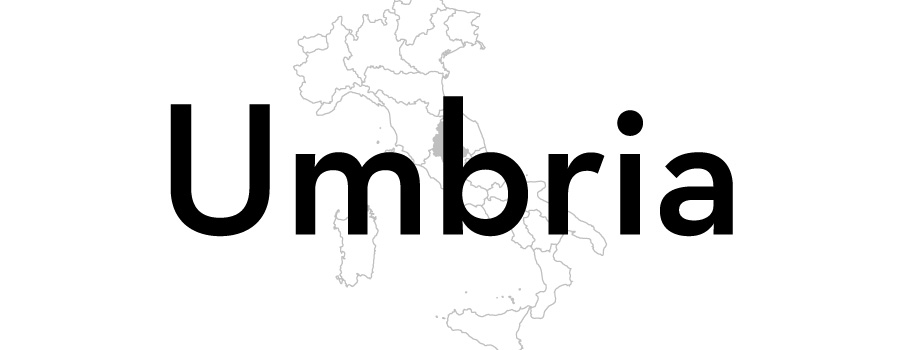
Norcia: Italy’s capital of pork
It might not be Umbria’s biggest city, but the beautiful town of Norcia is famous throughout Italy for its incredible butchers and charcuterie.
Norcia: Italy’s capital of pork
It might not be Umbria’s biggest city, but the beautiful town of Norcia is famous throughout Italy for its incredible butchers and charcuterie.
There are many reasons to visit Norcia. It’s the birthplace of St Benedict, who founded the Benedictine monastic system. It’s an ancient town that is still surrounded by walls that date back to the fourteenth century (although recent earthquakes have tragically damaged some of the older buildings). It sits in the middle of a valley by the River Sordo near the Sibillini Mountains, providing some wonderful landscapes. But what Norcia is really famous for is its pork, its butchers and its cured meats.
Norcia’s porcine reputation dates right back to Roman times, when the expert skills of the town’s butchers (known as norcinos) were held in such high regard that they were sometimes called on to perform basic operations on humans. By the Middle Ages norcino had become a derogatory term for shady types who travelled the country offering surgical procedures for cheap; today, however, it’s a name given to the very finest artisanal butchers in all of Italy – and many of them can be found in Norcia itself.
Among the beautiful buildings and sleepy piazzas of Norcia you’ll find beautiful family-owned shops with norcineria written over the door (something that’s become commonplace throughout the whole of Italy). These are the businesses of the last few master pork butchers keeping the norcino tradition alive, taking the very best pork and turning it into perfectly butchered cuts or beautiful cured meats and salumi. They’re often packed to the rafters with sausages, cured legs and other porky delights – it’s not unusual to see a few stuffed boar heads (or even the whole animal) guarding the shop entrance either.
But why are the norcinos of Norcia such expert butchers? The quality of the pork is just as important as the skill of the butcher, and Norcia is where you’ll find some of the happiest, most looked after pigs in the country. Umbria has always been home to vast forests of oak trees, and their fallen acorns would have been gobbled up by any pigs that happened to be passing by. Many believe this diet of acorns (along with any woodland herbs growing in the area) can be tasted in meat, and so Norcia quickly became home to some of the best pork in Italy. This, combined with the abundance of wild boar in the surrounding forests of Umbria, meant local butchers had plenty of top-quality meat to work with.
While norcinos are known for their ability to effortlessly break down a whole pig into perfect cuts, their real expertise is when it comes to curing. Italy is a country full of cured meats, charcuterie and salumi, but Umbria (and particularly Norcia) is home to some of the most famous. Being able to fill sausages and combine ingredients together by hand is key to great salumi-making, as is knowing just how much salt to add to the pork. Every part of the pig is utilised – from the liver (which is turned into mazzafegate) to the head and skin (which becomes coppa). Additional flavourings are usually kept quite simple to allow the quality of the pork to take centre stage, but lots of black pepper is generally used, as are local truffles for more premium cured meats. A platter of Umbrian salumi paired with some local cheeses and a glass of Sangiovese wine is the perfect representation of the region.
While you can generally find a norcineria in most Italian cities and towns, very few compare to the beautiful, old, original examples dotted throughout Norcia’s backstreets, with their salumi-laden entrances and huge variety of local products. If you’re visiting Umbria you’ll most likely head to the regional capital Perugia, but the little town of Norcia is certainly worth a stop – just make sure you arrive hungry.

